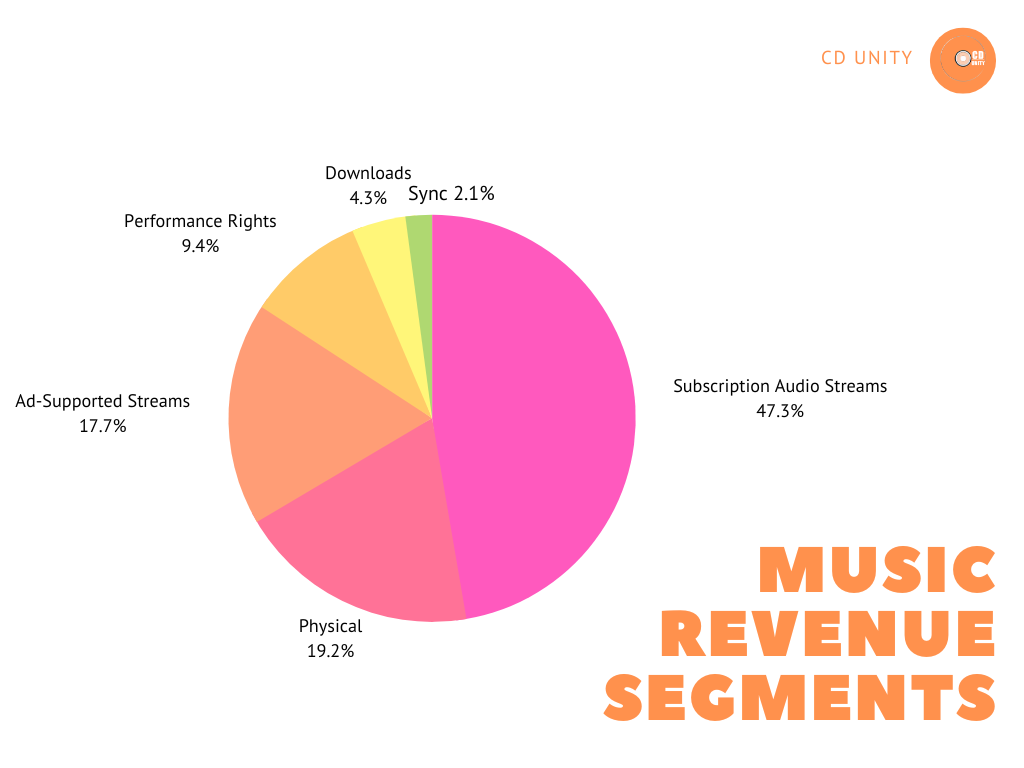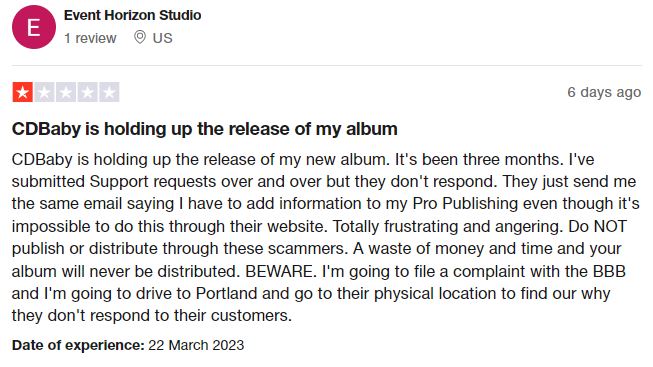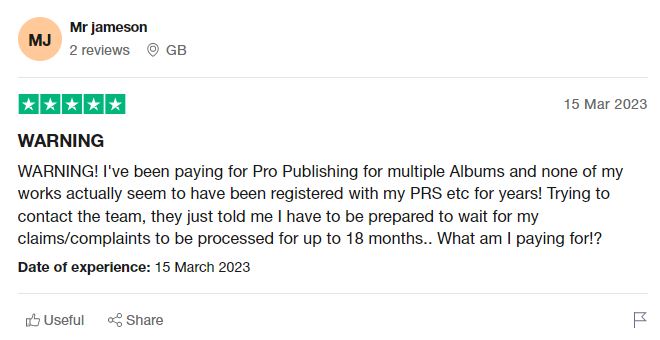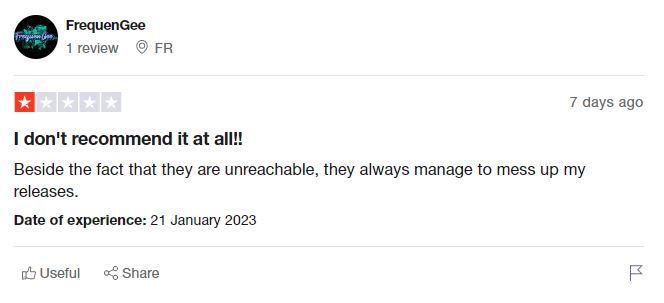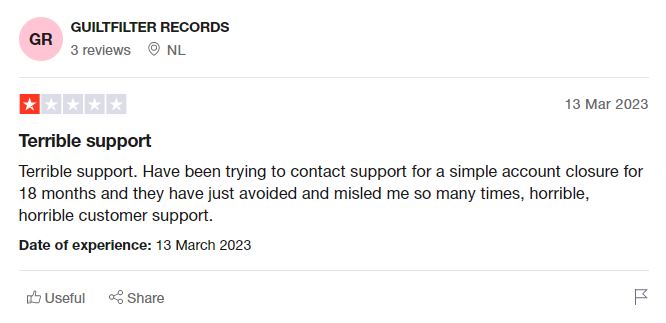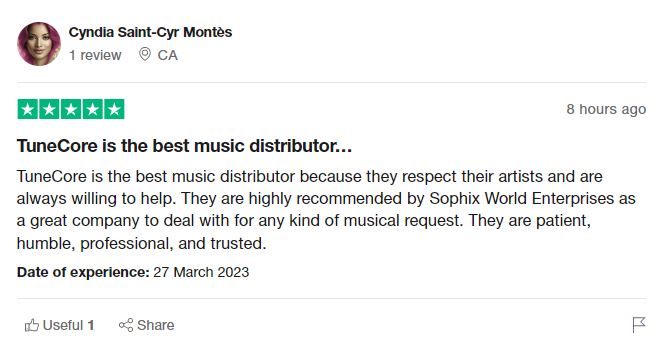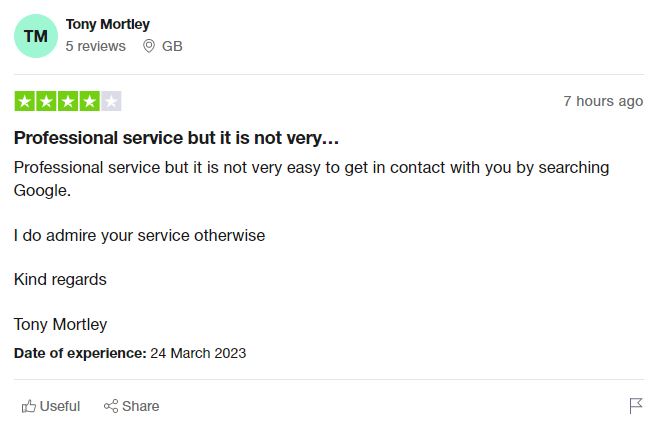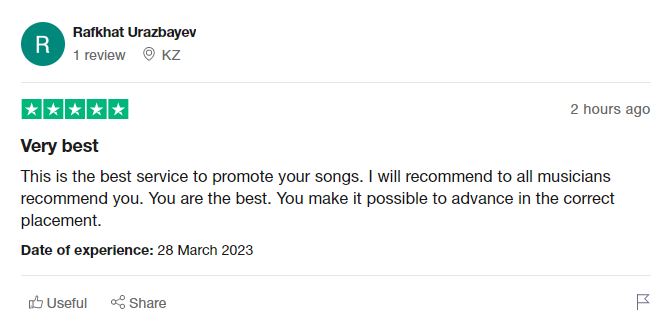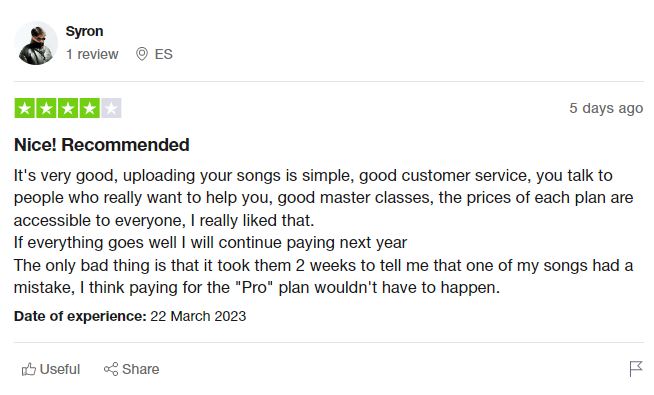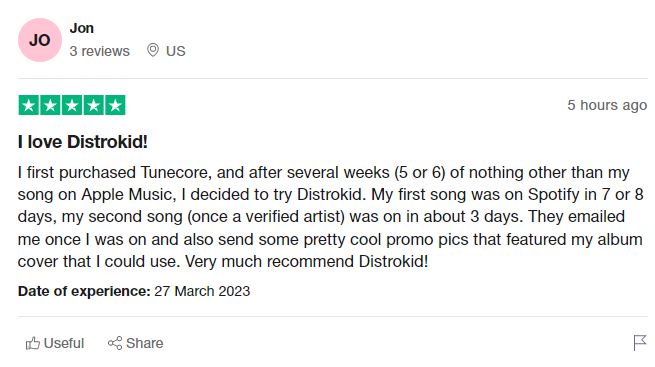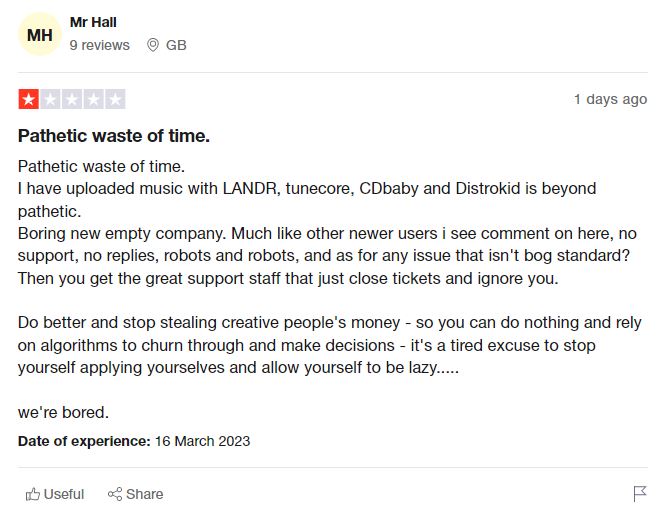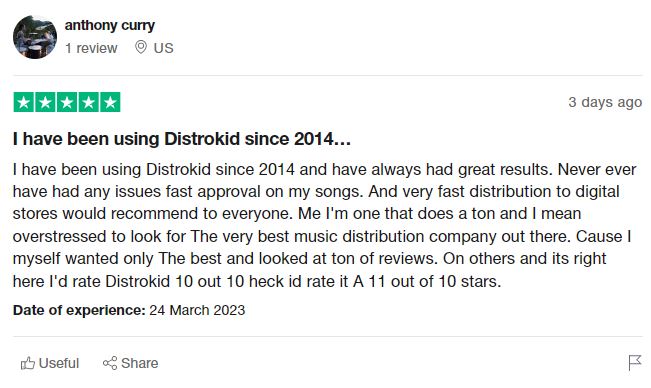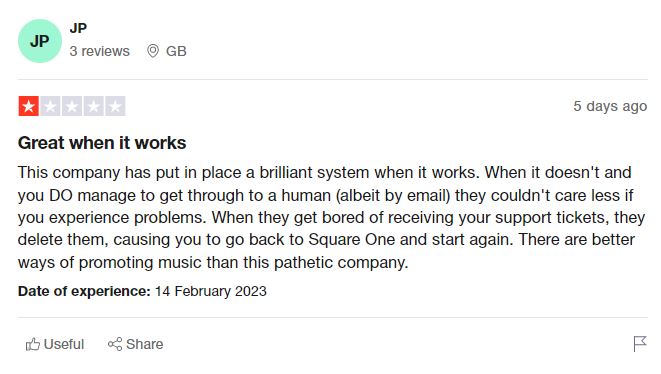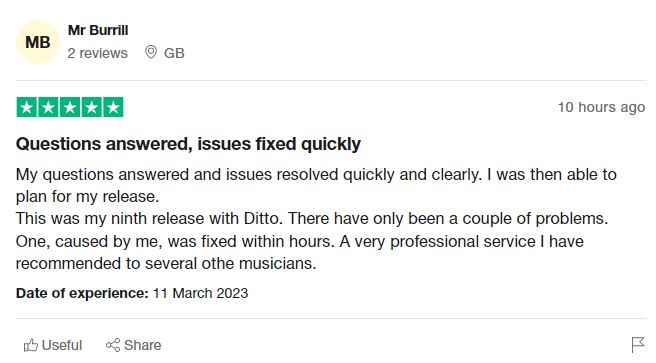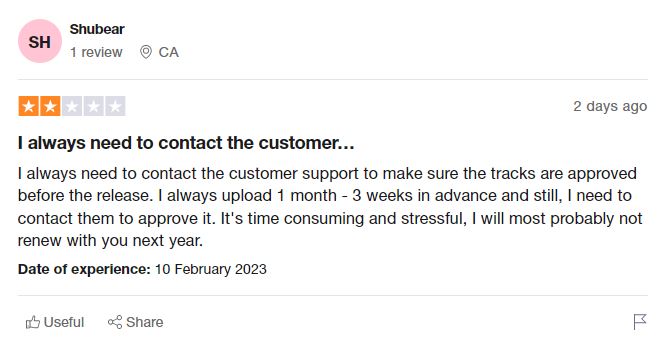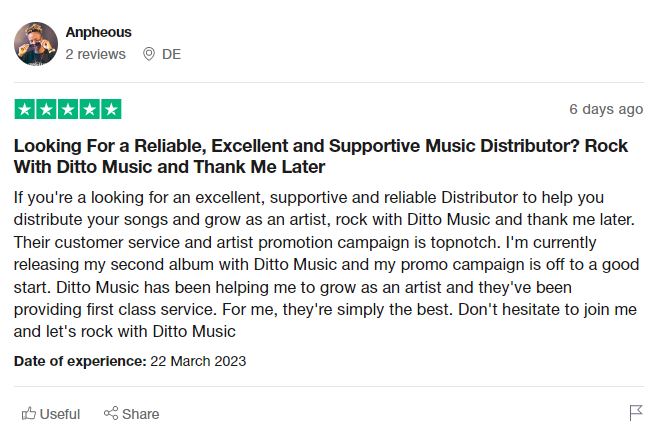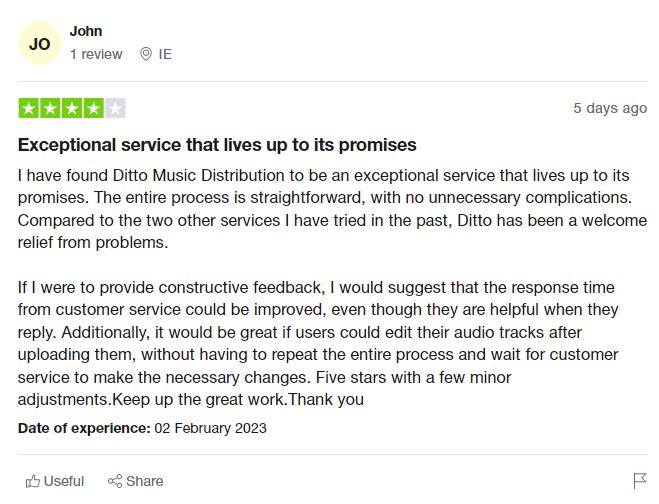How To Sell Music Online: Top Strategies From Experts
Are you a talented musician looking to share your passion with the world and make some money in the process?
Our digital age offers endless opportunities for artists like you to sell music online across various platforms.
So the big question is this:
How to sell my music online
In this blog post, we will guide you through understanding the landscape of the online music industry, building your brand, and and most importantly show you how to sell your music online.
So let’s dive in together and explore how you can start earning from your amazing tunes!
Table of Contents
Understanding The Music Industry Landscape In The Digital Age
The digital age has drastically changed the music industry landscape, offering musicians more opportunities than ever to sell their music online. Gone are the days of needing a record deal or relying on physical CD sales in brick-and-mortar shops – nowadays, artists can achieve success independently by harnessing the power of digital platforms and social media.
With an abundance of streaming services such as Spotify, Apple Music, and Amazon Music dominating the market, musicians now have a direct line to millions of potential fans across the globe.
In order to stand out from your contemporaries in this crowded space, you’ll need to develop a strong marketing strategy that makes use of these popular platforms.
Social media channels like Instagram and TikTok offer fantastic ways for you to engage with fans and expand your audience through viral content.
By fully embracing all that the digital age has to offer – both in terms of distribution outlets and promotional tools – selling your music online will never be easier nor more profitable!
Building Your Brand And Marketing Plan
Building a strong brand and marketing plan is essential for any musician looking to sell their music online. Learn how to create a unique selling proposition, identify your target audience, craft a professional website and social media presence, and more by reading on.
Identifying Your Target Audience
Identifying your target audience is a crucial step in successfully selling your music online. Knowing who you want to listen to and buy your music helps you tailor your promotional efforts, ensuring maximum impact and reach. Your target audience can be based on factors such as age group, musical interests, or even geographical location.
Firstly, think about the type of music you create and what makes it unique.
Consider which listeners would connect with your style the most – are they fans of a specific genre or sub-genre?
Alternatively, consider whether aspects of your personal background or story could attract particular demographics.
For example, if you’re an indie folk artist from a small town with relatable lyrics about growing up there; people from similar backgrounds might resonate more strongly with your music.
To further understand your target audience, engage with potential fans on social media platforms like Instagram and Twitter by sharing behind-the-scenes content or discussing musical influences that inspire you.
This will not only help identify those interested in what you have to offer but also provide valuable insights into their tastes and preferences – helping hone future marketing strategies for greater success when selling music online.
Keep track of metrics such as streaming platform analytics (e.g., Spotify for Artists) to gain a better understanding of who is actually listening to and engaging with your work.
By analysing this data carefully, including demographics like age ranges or locations where streams are highest; patterns emerge revealing key segments within the wider target audience landscape.
Creating A Unique Selling Proposition
As a musician looking to sell your music online, it’s important to create a Unique Selling Proposition (USP) for yourself. This involves determining what sets you apart from other artists and why fans should buy your music.
Your USP can be based on your sound, style, lyrics or any other unique aspect that makes you stand out.
For example, if you’re a folk singer-songwriter with a passion for the environment, you could use this as part of your USP. You might focus on creating environmentally conscious merchandise or partnering with environmental organisations to raise awareness through your music.
When creating your USP, consider how it aligns with your target audience and their needs. Think about what type of fans are most likely to appreciate and connect with your music.
Remember that having a strong USP is just one part of building a successful strategy for selling music online. It’s crucial to also have an active social media presence, professional website and solid marketing plan in place in order to reach and engage fans effectively.
Test drive your song!
Without the right mastering, your song could lack the impact it deserves, leaving you feeling frustrated.
Experience the transformation! Get a FREE mastering demo of your track and discover the sound quality you've been looking for.
Crafting A Professional Website And Social Media Presence
When selling music online, having a professional website and a strong social media presence can be crucial to building your brand and reaching your target audience.
Your website should act as a hub for all your musical content, including information about upcoming releases or shows, merchandise, bios, and links to purchase your music on various platforms.
Make sure the site is visually appealing and easy to navigate.
In addition to your website, social media platforms like Facebook, Twitter, Instagram and TikTok are great tools for promoting new releases or tours while engaging with fans in real-time.
One example of an artist who has effectively crafted their online presence is indie-pop musician Conan Gray. With over 2 million YouTube subscribers alone, he regularly shares fun anecdotes from his life while keeping viewers up-to-date with new release information across his other personal accounts such as Instagram (over 3 million followers). His cohesive branding across both his social media handles — bright colours and graphics featuring nostalgic references –reinforce this young artist’s appeal making him instantly recognisable among millions of other artists publishing their work online.”
Top 4 Online Stores To Sell Your Music
That’s the top 4 online stores to sell your music, including iTunes, Spotify, Amazon Music and Bandcamp.
Find out which platform is right for you.
iTunes
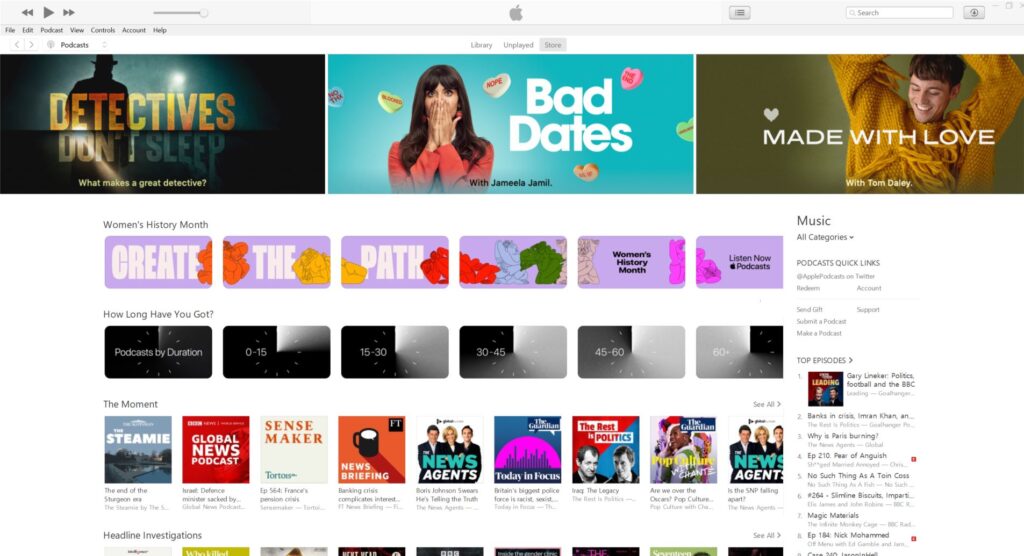
When it comes to selling your music online, iTunes is a popular platform you should definitely consider. With over 800 million active users worldwide, iTunes is one of the largest digital music stores and can help expose your music to a larger audience. To get started on iTunes, you’ll need to upload your music through a distributor such as CD Baby or TuneCore who will handle the technical aspects of getting your content up onto the platform.
One major advantage of selling on iTunes is that it offers high quality downloads in a lossless format which audiophiles love.
Additionally, by uploading your music there, you’ll be eligible for Apple Music automatic distribution which means fans can access your songs on their streaming service with ease. Another perk of using iTunes is its wide reach – many listeners use iPhones and iPads as their primary devices so releasing tracks via this platform can reach millions at once.
It’s important to note that while selling on iTunes has its advantages, there are also limitations. For example: they take 30% commission from song sales meaning that you only receive 70% revenue share per track sold; they have strict guidelines when it comes to album cover art; and some artists find that marketing themselves effectively alongside thousands of others can be challenging..
However despite these challenges , being able to sell directly through Apple’s ecosystem remains an impactful way for musicians and independent artists alike looking for exposure both domestically and globally – making it worth considering if you’re serious about making money off your tunes online!
Spotify
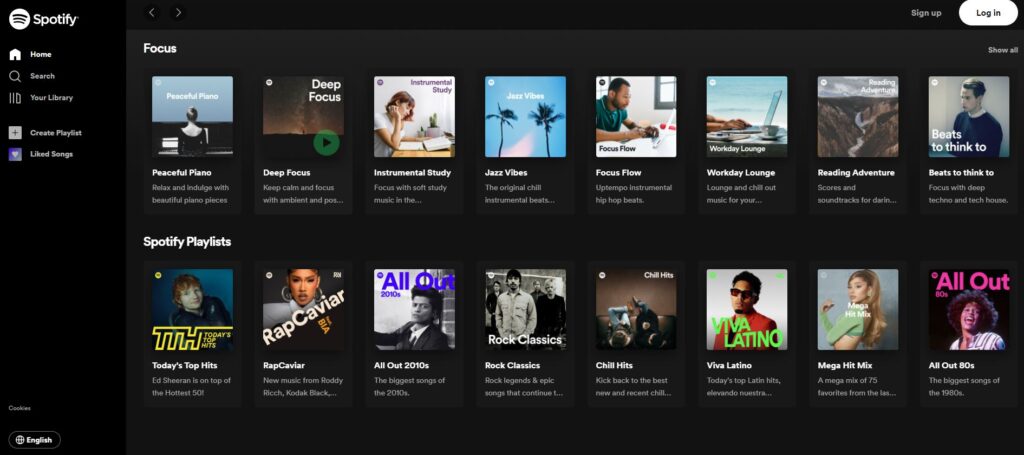
Spotify is one of the most popular streaming platforms for music lovers worldwide. The platform allows independent artists to upload their tracks directly and earn royalties based on streams.
TuneCore offers an affordable service that enables you to distribute your music onto Spotify alongside other major digital stores like Amazon Music, iTunes, and Google Play.
To get started with selling your music on Spotify, simply sign up for a free account as an artist or label representative. Once approved, you can begin uploading your tracks and customising them with artwork, track information, and metadata tags that help listeners find your music more quickly.
It’s important to note that Spotify algorithms reward frequent releases and consistency in popularity growth – meaning maintaining engagement levels through constant updates (such as weekly song releases or routine social media posts) is crucial.
Amazon Music
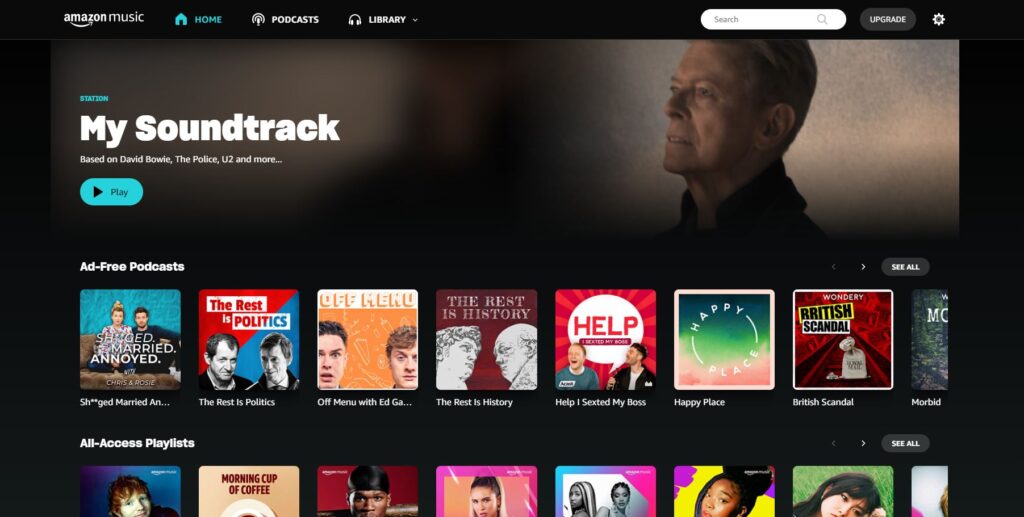
Amazon Music is one of the most popular platforms for selling music online. It provides artists with the ability to upload and sell their music directly to fans through Amazon’s digital download store.
This platform allows independent musicians to easily distribute their music directly and reach a wider audience. With Amazon Music, you can not only sell your individual tracks but also offer complete albums, making it an excellent option for artists looking to monetise their entire catalogue.
In addition, Amazon Music offers its users various promotional tools that can help increase exposure and sales of your music.
Featured Artist advertising spots are available in different genres on the website’s homepage, giving new artists an opportunity to get discovered by potential fans. You can also utilise Amazon’s email marketing campaigns and sponsored ads programs for more targeted promotions.
Overall, using Amazon Music as part of your online selling strategy is a great way to generate revenue from your music while reaching a larger audience at the same time. With millions of active customers worldwide already using its platform daily, it presents an incredible opportunity for independent artists looking to grow their fan base and income streams.
Bandcamp
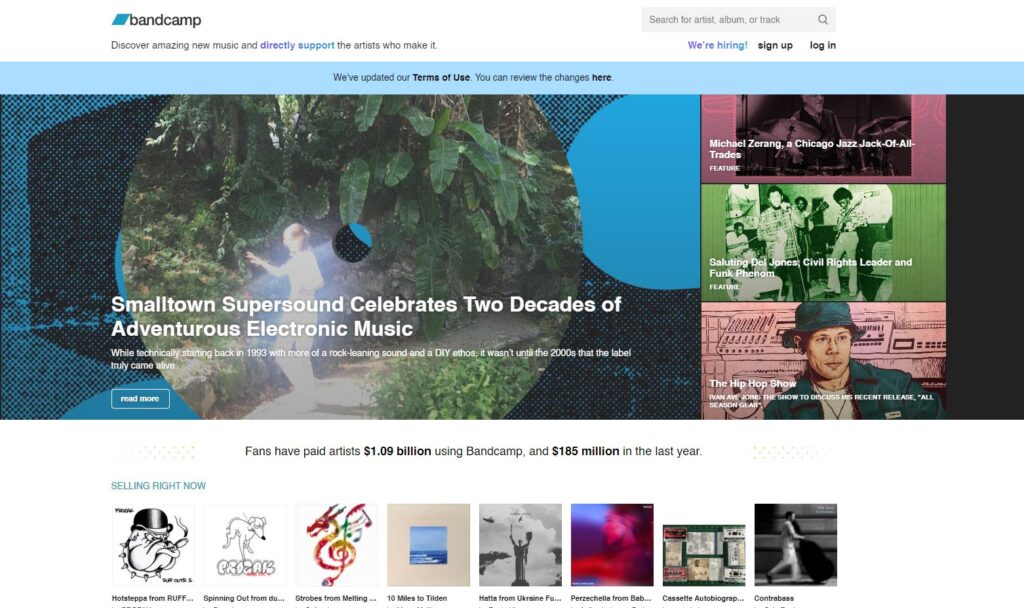
One of the best ways for independent artists to sell their music online is through Bandcamp. This platform offers an easy-to-use interface and a user-friendly experience for fans who want to buy your music.
With Bandcamp, you can set your own prices, add merchandise like t-shirts or posters, and even offer exclusive content to fans who purchase directly from you. Not only does this help you make money selling music, but it also helps build up your fan base.
Bandcamp also allows artists to connect with listeners in meaningful ways. You can interact with fans directly through the messaging system, and offer them early access to new releases or special promotions like discount codes or free downloads.
As an artist on Bandcamp, you have full control over how your music is presented and how it is sold – without having to give up large percentages of revenue as some other platforms might require.
Choosing The Right Music Distribution Service To Sell Your Music
When choosing a music distribution service, it’s important to compare major and independent distributors, understand royalties and revenue sharing, and consider the specific features and benefits each platform offers.
Comparing Major And Independent Distributors
When choosing a music distribution service, it’s important to consider whether you want to work with major or independent distributors.
Major distributors like CD Baby and TuneCore have established relationships with popular streaming platforms and digital stores. They often charge a one-time fee for their services, but their commission rates may be higher than those of independent distributors.
On the other hand, independent distribution companies like Ditto Music cater to niche markets and offer personalised customer service. They usually charge lower fees than major distributors but may not have access to as many online stores.
It’s essential to research both types of distributors before making your decision on which platform is right for you. Look at what each offers in terms of marketing support, royalty splits, and customer service so that you can make an informed choice that aligns with your goals as an artist.
Understanding Royalties And Revenue Sharing
As a musician selling your music online, it’s crucial that you understand the concept of royalties and revenue sharing. In simple terms, royalties are payments made to the owner of intellectual property for its use or sale.
When someone streams or downloads your music online, you’re entitled to receive a portion of the revenue generated from those sales. This is where revenue sharing comes into play – this refers to how much of that income will be paid out to you as an artist.
Different streaming platforms have varying royalty rates and revenue sharing structures in place. For example, Spotify pays out between $0.003 and $0.005 per stream depending on various factors such as listener location and type of account subscribed to (free vs premium). On the other hand, Apple Music generally pays artists a higher royalty rate compared with Spotify at around $0.006 per stream regardless of where listeners are located or subscription level.
It’s important to note that when working with distributors like TuneCore or CD Baby, they may charge a fee for their services but will also handle collecting royalties on behalf of artists while taking a percentage cut as agreed upon in their agreement terms.
Ultimately, understanding royalties and revenue sharing can help you make informed decisions about which platform/distributor/service is best suited for distributing your music online while ensuring maximum earnings potential from every purchase and stream made by fans worldwide
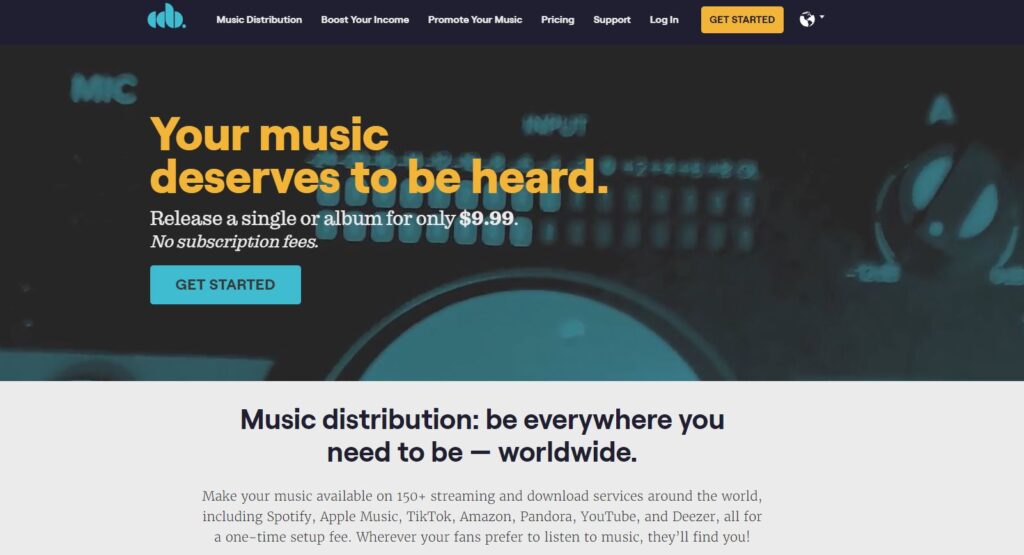
CD Baby
CD Baby is an online music store and distribution platform that has been around since 1998. It was started by a musician, Derek Sivers, who wanted to create a better way for independent artists to sell their music online.
Today, CD Baby distributes music to over 150 digital stores and streaming services worldwide.
As an artist looking to sell your music online, CD Baby can be a great option. They offer affordable pricing plans with no annual fees or hidden costs. You keep all of your rights and they take a small commission on each sale or stream of your music.
In addition to distribution, CD Baby offers other services such as sync licensing opportunities for TV shows and films, physical CD sales on their website, and marketing tools like email promotion campaigns. Overall, it’s a one-stop-shop for independent musicians looking to make their mark in the industry.
PROS
CD Baby Pros:
- CD Baby offers physical and digital music distribution
- Offers marketing tools for free
- Discounts on incredible tools for indie artists & DIY artists alike
- Publishing partners that help collect all streaming royalties
- Longest in the distribution game
CONS
CD Baby Cons:
- CD Baby is pricey compared to other digital music distribution companies
- Takes 15% commission of streaming royalties
- Doesn’t offer total monetization unless you purchase pro
TuneCore
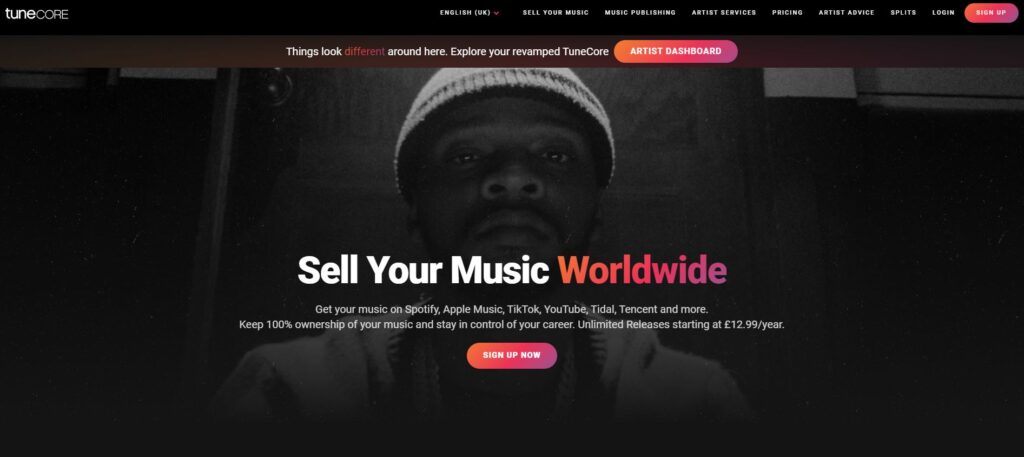
TuneCore is a platform that allows independent artists to distribute their music on popular streaming platforms like Spotify, Apple Music, Amazon Music and more. It offers easy-to-use tools for uploading your music and managing distribution, as well as providing access to detailed analytics and revenue reports.
One of the key benefits of TuneCore is that it enables artists to keep 100% of their earnings from the sale or streaming of their music.
This can be a game-changer for musicians who are looking to make a living from their craft. Additionally, TuneCore offers other useful services such as publishing administration, YouTube monetisation and sync licensing opportunities.
Overall, if you’re an independent artist looking for an efficient way to sell your music online on some of the world’s top streaming platforms – with total control over your earnings – then TuneCore could be right up your alley!
PROS
Tunecore Pros:
- Don’t take commission on your music
- Offer physical and digital distribution
- Have a publishing admin arm that tracks down all your streaming royalties
- Incredible analytics and marketing tools
- Opportunity to get artist advances
CONS
Tunecore Cons:
- 15% commission on free plan
- Additional artists on pro plan are £12.99 each
- Label support isn’t great
DistroKid
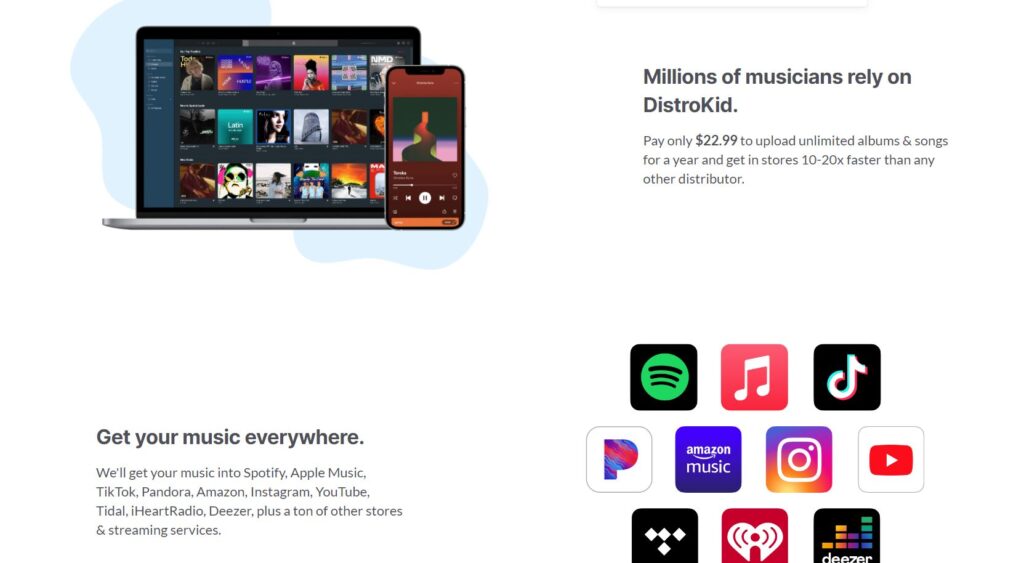
DistroKid is an online music distribution platform that allows musicians to distribute their music on all the major streaming services like Spotify, Apple Music, and Deezer.
What sets DistroKid apart from other platforms is its simplicity and affordability.
With just a few clicks, you can upload your tracks and have them distributed worldwide within minutes. DistroKid also offers additional features such as Shazam integration, YouTube monetisation, and customisable release dates for your albums.
As an independent musician, it’s important to choose a distribution service that not only meets your needs but also helps you make money without breaking the bank. Unlike some of its competitors who charge per track or album uploaded, DistroKid offers unlimited uploads for a flat annual fee starting at $19.99/year for basic distribution options which makes it one of the best-value-for-money options out there.
DistroKid also provides artists with detailed analytics so they can keep track of how their music is performing across different platforms with details such as streviu ams counts in real-time.
They make earnings transparent by paying 100% of royalties earned directly to the artist accounts with average payouts made within two days of receiving revenue reports from streaming services – this means artists get paid more quickly than competitors who typically take up to 30-90 days depending upon agreements thereby allowing them focus more on making great music rather than worrying about revenue management.
PROS
Distrokid Pros:
- Cheap yearly subscription for unlimited digital distribution
- Keep 100% of your revenue from streams
- Spotify’s preferred distributor
- Great customer service
- Automatic revenue share
- Best marketing tools & generators
- Exclusive Distrokid playlists & social media
CONS
Distrokid Cons:
- Charge $0.99/year for every track you want on Shazam plus other extras
- Don’t have publishing partners that help collect your royalties
Ditto Music
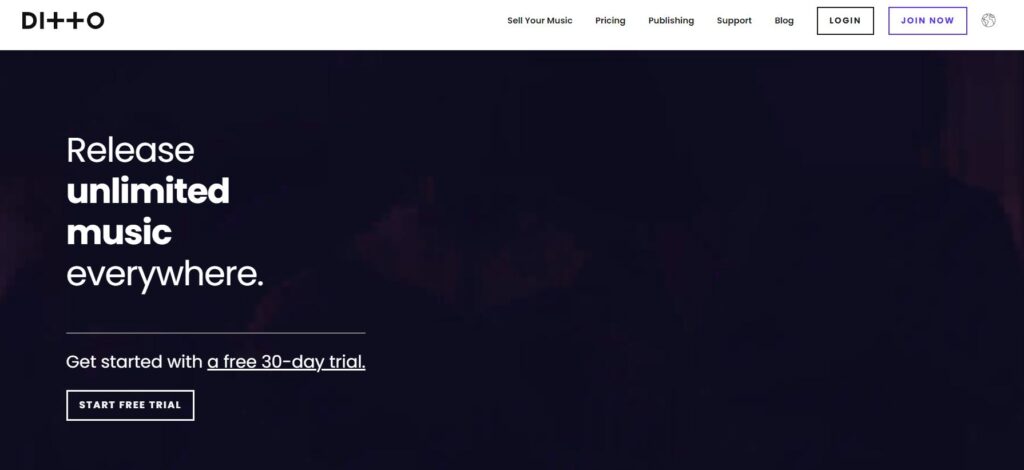
Ditto Music is an independent music distribution service that allows artists to sell their music on streaming platforms like Spotify and Apple Music.
With Ditto, artists can keep 100% of their royalties and they don’t have to sign a long-term contract. This platform is perfect for those who want more control over their music and its distribution.
Ditto also offers additional services such as playlist promotion, sync licensing opportunities, and social media marketing tools.
They provide detailed analytics so users can track the performance of their releases in real-time. Many independent musicians have used Ditto to get their music out into the world and build a fan base without having to rely on major record labels or intermediaries.
Overall, Ditto Music is a great option for artists looking for more independence when it comes to selling and promoting their music online. It’s simple to use, with easy-to-understand pricing plans that allow musicians at every level to benefit from its features while keeping full control over where it goes next!
PROS
Ditto Pros:
- Cheap yearly subscription for unlimited uploads
- Keep 100% of your streaming royalties
- Great analytics & marketing tools
- Exclusive Spotify playlist submissions
- Publishing arm to collect radio & TV royalties
- Best GUI & dashboard
- Revenue sharing
CONS
Ditto Cons:
- Not as fast digital distribution time
- Sometimes email replies can be slow
- Doesn’t support cover music videos, only originals, but supports audio
How To Sell Your Music On Streaming Platforms And Social Media
Learn how to effectively promote your music on streaming platforms like Spotify and Apple Music, as well as social media platforms like TikTok and Instagram, and reach a wider audience with these essential tips.
| Streaming Service | Average Payout per Stream |
|---|---|
| Spotify | $0.003 – $0.005 |
| Apple Music | $0.005 – $0.007 |
| Amazon Music | $0.004 |
| YouTube | $0.00069 |
| Tidal | $0.009 – $0.012 |
Uploading Your Music To Spotify
To get started, you’ll need to create an account on their website and sign up for Spotify for Artists. Once you’ve done this, you can upload your music directly to the platform.
Uploading your music is simple – just choose the tracks or albums you want to add and follow the instructions on screen. You’ll also need to provide some basic information about yourself as an artist (such as a bio and photos) so that fans can find and connect with you on the platform.
Make sure your profile looks professional and engaging – this will help attract more listeners and build your fan base over time.
Once your music is live on Spotify, it’s important to promote it effectively if you want people to find and listen to it. You can do this through social media, email marketing campaigns or by collaborating with other artists in similar genres.
The more exposure your music gets, the more likely it is that people will discover it organically through recommendations or playlists created by other users on Spotify.
Creating A Profile On Apple Music
To start, you will need a verified Apple ID that’s linked to an iTunes Connect account. This will allow you to upload your albums, EPs or singles, create artist pages with high-quality images and descriptions of your bio, set pricing tiers for each release and monitor analytics.
Having a well-optimised profile is critical since it determines whether users can easily find you in the platform’s search results or featured playlists. So take advantage of every space available by using compelling album art covers, engaging descriptions and catchy headlines highlighting features like collaborations or press coverage.
Don’t forget also to utilise user-generated content (UGC) by encouraging fans who stream and purchase your music on Apple Music to submit ratings and reviews.
Lastly, promoting via social media is crucial when trying to generate sales on any platform including Apple Music; as social shares lead directly back from potential listeners/fans across all streaming services. Share the link directing people towards purchasing land download links directly when linking them up with previews of songs or summaries about specific upcoming releases/events too!
Using TikTok And Instagram To Promote Your Music
On TikTok, you can create short music videos showcasing your skills and use popular hashtags to increase visibility. Meanwhile, Instagram allows you to share photos of yourself performing or creating music with the option to add snippets of your tracks as background music.
One way to maximise engagement with followers on these platforms is by hosting live performances or Q&A sessions on both TikTok Live and Instagram Live. Additionally, partnering with influencers from both platforms who have a large following within your genre could also lead to increased exposure for your music.
Another strategy when using these platforms is consistent posting of engaging content related to not only your music but also aspects that show off who you are as an artist beyond just the sound – this includes sharing behind-the-scenes footage during rehearsals or in-studio recording sessions showcasing how much work goes into making great sounds.
Also worth mentioning is that taking advantage of paid advertising features available on these apps such as sponsored posts can be useful in increasing reach further even if it’s a minimal budget at first before getting traction organically via sharing across user profiles.
Selling Your Music Directly To Fans
Selling your music directly to fans is a great way to build a loyal fanbase and increase your revenue; read on to discover the best ways to offer exclusive content, merchandise, host virtual concerts and events, plan live shows, and create and sell merchandise.
Offering Exclusive Content And Merchandise
One great way to monetise your music online is by offering exclusive content and merchandise. By giving fans something special that they can’t get anywhere else, you create a sense of exclusivity and make them feel like they are part of a community.
This can include things like limited edition vinyl, CDs, signed posters or handwritten lyrics from your latest songs. You can also offer access to behind-the-scenes content like studio footage, interviews or demos.
If you have a strong online following, creating merchandise with your band logo or artwork can be another way to engage with fans and generate additional revenue streams. T-shirts, hats, stickers and other branded items are popular choices among music fans looking to show their support for their favorite artists while getting something tangible in return.
Overall, offering exclusive content and merchandise is a great way to keep your fans engaged while generating additional income from your music career. Just remember to stay true to yourself as an artist and focus on offering high-quality products that truly resonate with your fan base.
Building A Fan Mailing List
Building a fan mailing list is essential for any musician who wants to establish a strong and loyal fan base.
By collecting email addresses from people who enjoy your music, you can keep them in the loop about upcoming releases, concerts, and other exciting news.
One way to get people to sign up is by offering exclusive content such as free downloads or behind-the-scenes footage.
It’s also important to make sure that your newsletter is engaging and informative so that subscribers look forward to receiving it.
Keep the tone conversational, share personal anecdotes or stories about your music-making process, and offer insights into what inspires you as an artist. Don’t be afraid to ask for feedback – this can help build stronger relationships with fans.
Remember that growing your mailing list takes time and effort but it’s worth it in the long run because these are the people who will be most likely to buy your music and attend live shows. So don’t underestimate its importance!
Hosting Virtual Concerts And Events
As live concerts and events are currently limited due to the ongoing pandemic, hosting virtual concerts has become a popular way for musicians to connect with their fans. Platforms such as YouTube, Facebook Live, and Instagram Live can be used to stream performances from the comfort of your own home or studio.
This also allows you to reach a global audience without having to worry about travel costs or venue fees.
To make your virtual concert stand out, think outside the box and add unique touches that will engage your audience. Consider offering exclusive merchandise such as posters or t-shirts that are only available during your online event. You could also host Q&A sessions or invite special guests/collaborators to join in on the performance.
One successful example is American singer-songwriter Ben Folds who hosted an “Apartment Requests” series where he took song requests through social media and performed them live from his apartment on Facebook Live.
This interactive approach not only kept his fans engaged but also allowed him to showcase his versatility as an artist. With some creativity, hosting virtual concerts can be a great way to keep your music career alive during uncertain times while still connecting with your fanbase in meaningful ways.
Planning Live Shows
Planning live shows is an important factor in selling your music online. It allows you to connect with your fans and build a solid fan base.
Make sure you plan your live shows carefully by considering the location, timing, and type of event that will suit both you and your audience.
Offering exclusive content and merchandise during these events can also help increase engagement from your fans. You can use this opportunity to sell merchandise such as T-shirts, signed posters among others. Additionally, building a mailing list for your fans will allow you to update them about upcoming shows in their area and share latest releases making it easier for them to support you.
Planning live shows is not only for established musicians but also can prove vital when creating new connections with potential industry professionals who attend gigs looking for new talent they might sign up down the line. So always put in some effort towards planning live gigs as they open opportunities beyond just entertaining existing fans!
Monetising Your Music Through Licensing And Sync Deals
By understanding different types of music licenses and finding opportunities for licensing and sync deals, you can further monetise your music. Read on to learn how you can maximise your revenue through this strategy.
Understanding Different Types Of Music Licenses
As a musician, you need to understand the different types of music licenses available when selling your music online.
One type is the mechanical license which grants permission to reproduce and distribute musical compositions, usually used for covers or sampling.
Another type is synchronisation (sync) license which allows your music to be used in TV shows, movies and other media content. You can also get a master use license that permits the use of specific masters or sound recordings.
It’s important to know about these licenses because they help protect your intellectual property as a musician and ensure you receive due compensation for its use.
Researching best practices for obtaining these licenses can increase your chances of earning more revenue and exposure from licensing deals.
For example, you could pitch your music directly to advertising agencies or work with sync placement companies who specialise in matching artists with potential placements in TV commercials, movies and video games. Understanding different types of music licenses helps musicians make informed decisions about how they monetise their music on various platforms online.
Finding Opportunities For Licensing And Sync Deals
As a musician, it’s important to explore opportunities for licensing and sync deals to monetise your music.
This involves allowing your music to be used in TV shows, films or commercials for a fee.
The first step is understanding the different types of licenses and agreements available.
For instance, you can opt for exclusive rights that give only one company the right to use your music or non-exclusive rights which allow multiple companies to license your music simultaneously.
Once you know the different types of licenses available, start researching companies that are looking for independent artists like yourself.
One way is by attending industry events where film producers or ad agencies scout new talent. You can also submit your tracks directly to online libraries that offer sync deals such as Musicbed and Artlist.io.
Reaching out directly to content creators with a pitch on how they could incorporate your music into their work is another option worth exploring. Also don’t forget about social media – this has become a popular platform where musicians share their work and connect with potential clients who might want to license their songs.
By taking advantage of these opportunities for licensing and sync deals, not only can you make some extra money but also gain exposure that could lead to even more lucrative gigs in the future.
Tips For Making Money By Selling Your Music Online
One effective way to make money by selling your music online is to offer discounts and promotions regularly to attract new fans and retain existing ones.
Offering Discounts And Promotions
As a musician, one way to attract more fans and increase your sales is by offering discounts and promotions.
This could be done through various means such as social media campaigns or email marketing strategies.
One great example of an effective promotion is offering limited-time discounts on your album or merchandise during holidays like Black Friday or Christmas. You can also offer bundle deals where fans can purchase both a CD and t-shirt at a discounted price.
Another effective strategy is partnering with other artists to offer package deals or hosting giveaways for your music. Collaborating with other musicians in your genre not only helps you tap into their fanbase but also allows you to reach new audiences who might not have heard about you before.
It’s important to keep track of the effectiveness of these promotions and make necessary adjustments along the way.
Analysing data from previous sales, website traffic, and social media engagement can help you identify what works best for your target audience and fine-tune future promotions accordingly.
Ultimately, strategic discounting coupled with excellent promotion techniques can help grow your fan base while increasing music revenue over time.
Collaborating With Other Artists
Collaborating with other artists is a powerful way to expand your reach and attract new fans. By working with others, you can offer something unique and create music that stands out from the crowd. There are many ways to collaborate including co-writing songs, sharing vocals, or producing together.
One great example of artist collaboration is when Ed Sheeran wrote “Love Yourself” for Justin Bieber. The song became a massive hit and showcased both artists in a new light. Another example is when Beyonce featured Jack White on her album “Lemonade,” adding an edge to her pop sound.
Collaboration can also lead to opportunities for live performances and touring together, which can attract even more fans. Plus, by collaborating with other artists, you’ll have access to their fan base as well as connections in the industry that could help promote your own music.
Overall, collaborating with other artists is a win-win situation that allows musicians to tap into each other’s strengths and create something truly special. Don’t be afraid to reach out and work with others; it may just be the key to unlocking greater success in selling your music online!
Licensing Your Music For Use In TV And Film
When it comes to making money from your music, licensing is an excellent option. It involves allowing someone else the rights to use your music for a fee. Many TV shows, films and advertisements require background music to set the mood and enhance their overall message. This presents opportunities for independent artists like you.
There are various types of licenses available depending on how the music will be used. For example, a synchronisation license allows your song to be played alongside visuals in TV or film while a mechanical license permits its use in recorded media such as CDs and vinyl records.
To get started with licensing, research companies that specialise in placing songs into TV shows or movies. You can also reach out directly to production companies yourself by finding contact information online. Ensure that everything is handled legally and professionally so you receive fair compensation for your work.
Remember that there is no right way to sell your music online – it all depends on what works best for you as an artist. Licensing is just one of many viable options out there so determine what method fits with your goals and focus on building personalised strategies around them based on helpful insights from digital distribution platforms like TuneCore, CD Baby etc..
Monitoring And Adapting Your Selling Strategy
It is important to regularly monitor the progress and success of your selling strategy by using analytics, and adapt as necessary to ensure maximum effectiveness.
Using Analytics To Track Your Progress
Tracking your progress is crucial when it comes to selling your music online. Analytics enable you to monitor how well your music is performing and make any necessary changes or adaptations to improve its success.
By analysing key metrics such as downloads, streams, and purchases on different platforms, you can gauge the effectiveness of your marketing strategy and adjust it accordingly.
For instance, if you notice that there is an increase in streams on Spotify but a drop in sales on iTunes over a specific period, this information will help you identify which channel requires attention or improvement. In addition, data analysis will show the demographics of fans listening to your music enabling you to tailor campaigns towards them directly.
Analytics also allow artists to track their royalties earned from streaming services like Apple Music or Spotify and ensure they are receiving fair payment for their work. Utilising analytics not only helps musicians understand where they stand in terms of sales but provides feedback needed for growth.
Adjusting Your Strategy As Needed
As you start selling your music online, it’s important to keep track of your progress so that you can adjust your strategy as needed.
Using analytics is a great way to monitor how well your music is doing on different platforms and which marketing efforts are paying off.
For example, Spotify for Artists offers data such as the number of streams and listeners, which can help you gauge the success of your promotional campaigns. You should also keep an eye on social media engagement and website traffic to determine what’s working and where improvements could be made.
It’s important to be adaptable, open-minded and willing to make changes when necessary.
If one platform isn’t generating enough revenue or audience engagement, consider trying another option or adjusting the promotion strategy accordingly.
Additionally, take time to listen to feedback from fans and other musicians about what they would like from you in terms of new releases or merchandise offerings. By keeping an open mind while still remaining true to yourself as an artist, you’ll have greater success in selling your music online.
All in All
By understanding the music industry landscape in the digital age and building a strong brand and marketing plan, you can effectively sell your music through various platforms like iTunes, Spotify, Amazon Music, Bandcamp, CD Baby and more. Choosing the right distribution service is also key to generating revenue from your sales.
Don’t forget about selling directly to fans by offering exclusive content or merchandise through fan mailing lists or virtual concerts. Making money via licensing deals is an additional way of monetising your work.
Hope that was helpful.
Cheers,
Josh
Hello, I’m Josh, and I’ve been honing my graphic design skills for almost 15 years now, catering to the needs of bands and businesses alike. What really fascinates me is the business aspect of the music industry. In addition to my design work, I also happen to play the Hammond organ, and I strive to share my knowledge through helpful articles that I write exclusively for you all!

